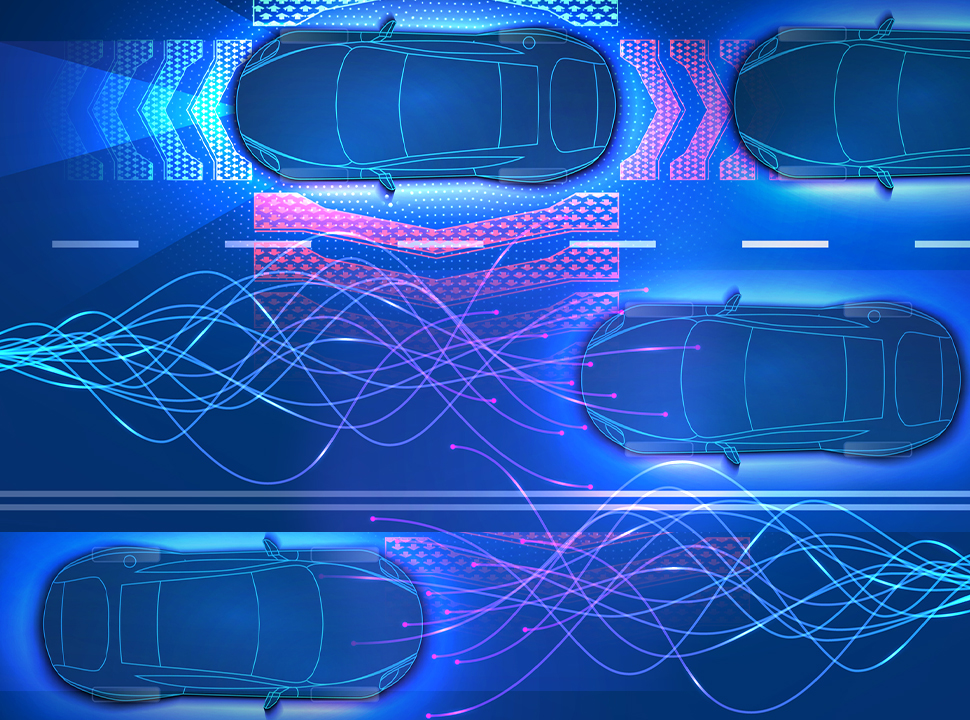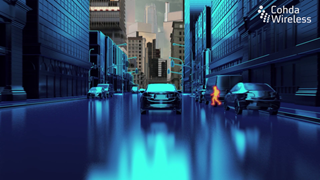Autonomous Roadways: Collective Perception Allows Vehicles to See More
Autonomous Roadways: Collective Perception Allows Vehicles to See More


Roadside stations will connect autonomous vehicles to a singular network and provide awareness of non-autonomous vehicles.
Autonomous vehicles are the latest disruptive technology on our roadways. But engineers, developers, and city planners all have different ideas about how our roads could look with cars leading the way.
Eduardo Nebot, professor at the University of Sydney’s School of Aerospace, Mechanical, and Mechatronic Engineering, is working on getting ahead of this conversation and challenging how we think about our roadways of the future. As Nebot explains, the main challenge with autonomous vehicles is that a single-vehicle is limited in its capability to predict issues on the road and act quickly.
“Sensors can only see whatever is in front of them,” he explains. “They cannot see what is happening around the corner. In a way, they have the same limitation that we have with our own eyes.”
Recommended for You: Building a Regulatory Case for Autonomous Vehicles
To combat this issue, Nebot and his team at the Australian Centre for Field Robotics, including Dr. Mao Shan and Dr. Stewart Warroll, are developing a system in which autonomous vehicles can communicate with one another. The system is called vehicle-to-X (V2X) communication via intelligent roadside stations. These stations would read and interpret signals from surrounding vehicles and redistribute the information, notifying other cars on the road about upcoming obstacles.
The idea is called “collective perception.” It would give autonomous vehicles a kind of x-ray vision, or spatial infrastructure, that they could use to navigate all obstacles in their general proximity. This technology would benefit all cars on the road, including non-autonomous vehicles, Nebot explains. If a vehicle is non-autonomous but has been detected by the station, then even if it cannot engage with the system, other autonomous vehicles on the road would be able to.
“For example, the autonomous vehicle could be signaled of the speed that a non-autonomous vehicle is going and that it likely will not stop for a red light,” he said. “That driver is not going to stop. There’s nothing I can do about that. But, the autonomous vehicle will be able to see that and begin to decelerate to avoid the collision.”
You May Also Like: Making Signs Legible to Autonomous Cars
The biggest challenge with a system like this that would operate across cities or even entire countries is the computational power it takes to digest all of the information coming in, especially when the same data is coming in from multiple sources. To tackle this, Nebot and his team have designed a complex algorithm that fuses all of the information and compresses it into short messages.
“These would be very simple messages to let the vehicle know there is an obstacle at certain coordinates,” he said. “The vehicle would also then rely on its own sensors to confirm the location of the obstacle and decide what to do.”
The next step for Nebot and his team will be to implement a machine learning aspect to the collective perception so that a vehicle can receive the information and then predict how it will respond in any given situation, especially when interacting with humans.
Nebot explains that it is challenging for a machine to predict what a person will do. But when you’re walking in the airport, there is a seamless interaction, a flow in a large crowd of people going in every direction. People very rarely collide with each other. Schools of fish do the same thing as birds in a murmuration. This is the kind of interaction Nebot is after regarding machines and people.
“Imagine that you provide a machine with these capabilities, to be able to infer your intention and react,” he said. “Your behavior influences the machine and vice versa. We could comfortably have machines operating next to us like people.”
Editor's Pick: Driverless Cars Will Race at Indy
For now, technology like Nebot’s puts us one step closer to seeing roadways where at least the vehicles can interact with one another. Individual car owners will have more options as manufacturers continue to recognize the benefits, and the next ten years will be shaped by it dramatically. Nebot hopes that it won’t be expensive one day and that all cars will be able to be retrofitted with the tech. Large corporations like Amazon and BP are also signing contracts to implement this technology for their fleets.
“The autonomous technology is ready, and it is becoming very robust,” he said. “So you’re going to see a significant deployment of autonomous operation in all these areas.”
Cassandra Martindell is a science and technology writer based in Ohio.
Eduardo Nebot, professor at the University of Sydney’s School of Aerospace, Mechanical, and Mechatronic Engineering, is working on getting ahead of this conversation and challenging how we think about our roadways of the future. As Nebot explains, the main challenge with autonomous vehicles is that a single-vehicle is limited in its capability to predict issues on the road and act quickly.
“Sensors can only see whatever is in front of them,” he explains. “They cannot see what is happening around the corner. In a way, they have the same limitation that we have with our own eyes.”
Recommended for You: Building a Regulatory Case for Autonomous Vehicles
To combat this issue, Nebot and his team at the Australian Centre for Field Robotics, including Dr. Mao Shan and Dr. Stewart Warroll, are developing a system in which autonomous vehicles can communicate with one another. The system is called vehicle-to-X (V2X) communication via intelligent roadside stations. These stations would read and interpret signals from surrounding vehicles and redistribute the information, notifying other cars on the road about upcoming obstacles.
The idea is called “collective perception.” It would give autonomous vehicles a kind of x-ray vision, or spatial infrastructure, that they could use to navigate all obstacles in their general proximity. This technology would benefit all cars on the road, including non-autonomous vehicles, Nebot explains. If a vehicle is non-autonomous but has been detected by the station, then even if it cannot engage with the system, other autonomous vehicles on the road would be able to.
“For example, the autonomous vehicle could be signaled of the speed that a non-autonomous vehicle is going and that it likely will not stop for a red light,” he said. “That driver is not going to stop. There’s nothing I can do about that. But, the autonomous vehicle will be able to see that and begin to decelerate to avoid the collision.”
You May Also Like: Making Signs Legible to Autonomous Cars
The biggest challenge with a system like this that would operate across cities or even entire countries is the computational power it takes to digest all of the information coming in, especially when the same data is coming in from multiple sources. To tackle this, Nebot and his team have designed a complex algorithm that fuses all of the information and compresses it into short messages.
“These would be very simple messages to let the vehicle know there is an obstacle at certain coordinates,” he said. “The vehicle would also then rely on its own sensors to confirm the location of the obstacle and decide what to do.”
The next step for Nebot and his team will be to implement a machine learning aspect to the collective perception so that a vehicle can receive the information and then predict how it will respond in any given situation, especially when interacting with humans.
Nebot explains that it is challenging for a machine to predict what a person will do. But when you’re walking in the airport, there is a seamless interaction, a flow in a large crowd of people going in every direction. People very rarely collide with each other. Schools of fish do the same thing as birds in a murmuration. This is the kind of interaction Nebot is after regarding machines and people.
“Imagine that you provide a machine with these capabilities, to be able to infer your intention and react,” he said. “Your behavior influences the machine and vice versa. We could comfortably have machines operating next to us like people.”
Editor's Pick: Driverless Cars Will Race at Indy
For now, technology like Nebot’s puts us one step closer to seeing roadways where at least the vehicles can interact with one another. Individual car owners will have more options as manufacturers continue to recognize the benefits, and the next ten years will be shaped by it dramatically. Nebot hopes that it won’t be expensive one day and that all cars will be able to be retrofitted with the tech. Large corporations like Amazon and BP are also signing contracts to implement this technology for their fleets.
“The autonomous technology is ready, and it is becoming very robust,” he said. “So you’re going to see a significant deployment of autonomous operation in all these areas.”
Cassandra Martindell is a science and technology writer based in Ohio.






